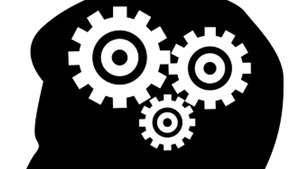God poured two things generously into humanity as He created our first parents. He gave them the breath of life, which was His alone to give, and then He gave them a creative streak, in His image.
The first time the breath of life came to humanity was on day six of Creation.
On this day we read that “the Lord God formed the man from the dust of the ground and breathed into his nostrils the breath of life, and the man became a living being” (Genesis 2:7).
The name that God gave this man— “Adam”—literally means “ground” or “groundling.” He was made from the ground. Up to this point in the Creation narrative, everything God created was spoken into existence. God said it, it happened and God said it was good.
But when it comes to the first human, He knelt down and formed man with His hands out of the ground.
Recently in sunny Queensland I watched an artist kneeling on the beach in front of a huge mound of sand forming it with his hands. From this pile, that would have measured three metres deep by six or seven metres long, emerged a sleeping dragon. It was amazing to watch. And as I did, I couldn't help wondering if this is what it would have been like to watch God forming Adam out of clay. What would emerge? Only the artist truly knew.
When God had finished making His sand-sculpted man, He gave life to His newest creation. Using His mouth, not to speak this time, God breathed life into the first man. Humans are a unique mixture of heaven and earth. We are made here on this dusty blue-green orb, but our life is from God.
Next in the text we see an interesting outgrowth of being created from the ground. The fruit of Adam's labour emerges from the same place he came from—the earth or nature. “The Lord God took the man and put him in the Garden of Eden to work it and take care of it” (Genesis 2:15). And that's been a major source of identity for humankind since. We are the custodians of the earth.
We even call “her” our mother. We truly are the children of both God and nature, for that is how He created us. Thus finding a love for both God and nature brings us inner peace and fulfils our destiny.
After creating Adam, God had a special job for the first man to do. “Now the Lord God had formed out of the ground all the beasts of the field and all the birds of the air. He brought them to the man to see what he would name them; and whatever the man called each living creature, that was its name. So the man gave names to all the livestock, the birds of the air and all the beasts of the field. But for Adam no suitable helper was found” (Genesis 2:19, 20). Adam was the first zookeeper, and all the animals were new.
That first day in the Garden was a busy one! And as Adam named each species he noticed there were pairs or groups of like kind. But he was alone.
Once Adam recognised his uniqueness and his lack of a mate, God went into stage two of human creation. God formed Eve. “So the Lord God caused the man to fall into a deep sleep; and while he was sleeping, he took one of the man's ribs and closed up the place with flesh” (Genesis 2:21).
In the original Hebrew text, the word translated “rib” is literally “side.” It is used in the story of Noah's ark when God told Noah to “put a door in the side of the ark” (Genesis 6:16). God took a portion of Adam's side—not his head or foot, which could represent domination or submission—to represent the side-byside nature of the man and woman. They were to be equals.
“Then the Lord God made a woman from the rib he had taken out of the man, and he brought her to the man” (Genesis 2:22). All day Adam had been naming each of the creatures as he saw them. So, it makes sense that he should name this one too. What would he call her? “The man said ...” (Genesis 2:23). The word translated as “said” in this verse is more aptly “shouted,” “exclaimed” or “shouted.” Whatever Adam is about to say, he is having a tough time keeping it in. He is amazed, overwhelmed and in love!
When translating the original Hebrew text of this story, Adam's first word in regard to Eve is rarely translated. It is difficult to put into English because it is more of an emotional outburst than a proper word. It's one of those words that require shouting to be understood correctly. Some translators just put an exclamation mark at the end of Adam's remarks rather than try to translate his first word. The untranslated first word would be comparable to “at last!” or “indeed!” or even “WOW!” Adam was impressed! We can tell that Adam truly was impressed because, after this abrupt emotional outburst, he does something that very few men have done for their new wives. He writes and recites poetry in her honour. Rather than just saying, “I'll call this one, ‘Woman'”—he forms a poem and sings a love song to his new bride. The man said, “This is now bone of my bones and flesh of my flesh; she shall be called ‘woman,' for she was taken out of man” (Genesis 2:23).
Like Adam, Eve's place of origin is where she and her daughters over time will obtain much of their identity. Eve was drawn out of the human flesh of Adam. Likewise, the fruit of a woman's labours emerge after nine months of creating within the “flesh of my flesh, bone of my bones” motif.
Woman births community—family— and it is from community and family that women derive much of their identity.
Man struggles to make a living out of the earth and woman struggles as she produces the living from within herself.
Our identity, largely, emerges from our origins. And it is from identifying with our beginnings that we fulfil our Creator's desire: “Let us make man in our image, in our likeness” (Genesis 1:26).
We too, like our Maker, are creative—in the garden and in marriage, we create.
The very next verse is one that we often hear at weddings. And rightly so, because this is the first wedding between man and wife, and it is being conducted by God Himself. “For this reason a man will leave his father and mother and be united to his wife, and they will become one flesh” (Genesis 2:24).
United. For what reason? Because in marriage we are spiritually fused—heart to heart—and then physically we become one and our flesh-to-flesh relationship is creative in its very nature. From our physical union emerges a baby “in our image, in our likeness” and then we, like Adam, give a name to the new creation.
And we have family, community and a greater understanding of the very nature of our Creator God. For He truly is the origin of our species!




